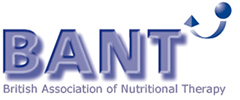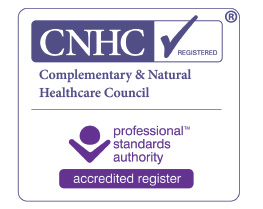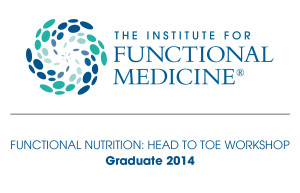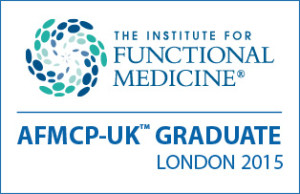Are you afraid of eating foods high in cholesterol? Have you forsaken the pleasure of your egg breakfast?
There is a lot of confusion about cholesterol and we have been led to believe it causes heart disease and should be minimised with a low-fat diet. The evidence for this is in fact very weak and the low-fat diet carries many risks to your health which I cover in more detail elsewhere.
In this two part series I describe 10 ways in which cholesterol is vital for your very existence.
Does cholesterol cause cardiovascular disease?
There are many markers of heart disease risk. Cholesterol, first isolated from gallstones during the French Revolution (1), has been considered a marker of heart disease risk, but one that I am questioning here. Another marker of heart disease risk is the number of Low Density Lipoprotein particles and to what extent these LDL particles are oxidised. It is the oxidation of LDL, in fact, that may drive inflammation and damage in arteries and thus antioxidants have been suggested to prevent cardiovascular disease (2).
These LDL particles, and other ‘lipoproteins’, are made by the body to transport fatty substances and fat-soluble micronutrients around the body to where they are needed, because these nutrients are not soluble in your blood. The lipoproteins carry fats, fat-soluble vitamins (A, D, E, K1 and K2), Coenzyme Q10 and cholesterol. So LDL particles happen to carry cholesterol (and other nutrients) around the body, but the number of LDL particles and the number of oxidised LDL particles, which are better markers for heart disease risk, are not necessarily reflective of the amount of cholesterol in your body, and the total amount of cholesterol is not a good marker of heart disease risk.
What your GP will usually measure is LDL-C (LDL cholesterol) not LDL-P (number of LDL lipoproteins, or LDL particle count). LDL-C levels below 130 mg/dl are sometimes considered ‘good’ (3), or sometimes less than 115 mg/dl is aimed for (4) but more commonly the target LDL-C level is 100 mg/dl (5, 6, 7, 8) and yet in a large cohort (of 136,905) patients with coronary artery disease, the most common form of heart disease in the UK (9), almost half had LDL-C levels of <100 mg/dl on admission to hospital (10). Furthermore in type 2 diabetic patients with LDL-C < 100 mg/dl great variance was found in their LDL-P levels, and hence their risk of cardiovascular disease (11). Research does indicate a correlation between LDL-C and heart disease risk over larger populations (12), but as we have seen LDL-C is certainly not the best marker to assess an individual’s risk of cardiovascular disease. Measuring just LDL-C without looking at more sensitive markers of heart disease risk such as oxidised LDL will also miss many cases of increased risk of cardiovascular disease.
LDL particles in fact transport cholesterol from the liver where it is made to the rest of the body where it is taken up by tissues via specialised receptors (13). As the LDL lipoproteins deliver their nutrients to the tissues they become smaller and also denser, since cholesterol and fat are less dense than protein. It is these small dense LDL lipoproteins that are more readily oxidised and may initiate the inflammatory process of arterial damage that is the beginning of coronary artery disease (14, 15, 16), perhaps simply because these particles have been in the circulation for longer and with time the antioxidants they were provided with by the liver are used up to counter oxidation of the particle’s cargo of fats, cholesterol and fat soluble nutrients. It has also been proposed that small dense LDL are more likely to damage your arteries because they more easily penetrate the walls of your arteries (a single layer of cells known as the endothelium) and also tend to bind more strongly to the connective tissue just below the endothelium (17), or perhaps I should say ‘around’ the endothelium since we are talking about a tube. It has also been proposed that small dense LDL particles are the result of high triglycerides (a type of fat) and poor delivery of triglycerides to the tissues, and are associated with heart disease rather than being a cause of heart disease (18). Whatever the cause, the proportion of small dense LDL is linked with oxidised LDL and arterial damage (19, 20, 21).
So now you can see that the best marker for heart disease risk we have discussed may be oxidised LDL. Small dense LDL is a good proxy for oxidised LDL and then LDL-P can also be helpful, since the more lipoproteins you have the more likely you are to have a significant number of oxidised particles. Moreover the larger buoyant (less dense) LDL lipoprotein particles may also have some level of impact on heart disease risk according to some research (22) and would be included in the total LDL-P. Finally we have LDL-C, which is a poor proxy for LDL-P as we have already seen.
HDL cholesterol is sometimes referred to as ‘good cholesterol’ and this is the cholesterol carried in HDL lipoproteins back to the liver where it may be excreted as bile if there is enough cholesterol, or repackaged into LDL and other particles to be sent back into the blood stream to wherever it is needed in the body. Triglycerides are the most common form of dietary fat and are also found in your bloodstream (in particles since fat does not mix with water). A high ratio of triglycerides to HDL cholesterol has been linked with an increased risk of coronary artery disease as well as a higher fraction of small dense LDL lipoproteins (23). HDL and triglycerides are commonly measured by your GP so this is a good low-cost option for testing your risk of heart disease.
This pattern of high triglycerides, low HDL cholesterol, high numbers of small dense LDL lipoproteins that is linked with an increased risk of heart disease is also linked with insulin resistance (17, 24) and it is important to note that although triglycerides may be elevated in the short term by the dietary fats you eat (25), in general calories coming from dietary carbohydrate rather than dietary fat are what will elevate blood triglyceride levels (26, 27, 28, 29) and reducing carbohydrate intake may be more effective in reducing blood triglycerides than caloric restriction (30). This may be why the leading cause of death in patients with type 2 diabetes is cardiovascular disease (31).
Do dietary cholesterol and fat cause heart disease?
So far I have focused on cholesterol in your body but what is the effect of dietary cholesterol?
There are certain individuals (around 25% of the population) for whom increased cholesterol intake will result in increased LDL-cholesterol, but for these individuals HDL-cholesterol will also rise and have a protective effect (32, 33) Moreover increased dietary cholesterol actually reduces the number of small dense LDL particles (34) and epidemiological studies have found no significant association between dietary cholesterol intake and heart disease (35).
As for dietary fat, a 2015 meta-analysis found that restricting dietary fat could was indeed associated with lower cholesterol levels, but this was not linked with any significant difference in mortality from all causes or from heart disease (36). And as for saturated fats specifically, a 2014 review of over 70 studies found mortality was not reduced by following a diet low in saturated fat when compared to consuming higher levels of saturated fat (37).
Your body makes cholesterol because it needs cholesterol
The more dietary cholesterol you absorb the less your body makes, as in it’s wisdom your body attempts to find homeostasis, or balance, though this mechanism does not always work as well as we might hope so that a high intake of dietary cholesterol may sometimes elevate levels of cholesterol in the body (38, 39, 40).
Cholesterol can be made by all of the cells in your body. Around 60-80% of your cholesterol is made in your liver, intestines and skin, because it is difficult to get enough in your diet. Cholesterol is not made in the body for no reason.
Cholesterol in pregnancy
Cholesterol rises dramatically in pregnancy and goes above the normal adult range in the first trimester even in women considered by researchers to be ‘healthy’ (41, 42). Might this be because cholesterol is needed for the formation of new life or does getting pregnant put you at high risk for heart disease? Heart attacks in pregnancy or postpartum are uncommon (43), though this does not discount the possibility of a longer-term effect on cardiovascular health. There is some data indicating that breastfeeding mothers have a long-term lower blood pressure and reduced risk of heart disease (44) and in women over the age of 50 childlessness is associated with an increased risk of sudden cardiac death (45). Some of this increased risk might be associated with not being in a supportive and stable relationship, or other factors unaccounted for, but at least the surge of cholesterol in pregnancy does not seem to cause a huge risk of mortality later in life.
Why you need cholesterol
Cholesterol and hormones
Steroid hormones are produced from cholesterol in your mitochondria (46, 47). These include cortisol, aldosterone, testosterone, oestrogen and progesterone.
First pregnenolone is made from cholesterol and is then converted into the other steroid hormones (48).
Cortisol, for example, although often seen as something to reduce, allows you to respond effectively to stress and it has been found that examination stress increases cholesterol levels, which may be due to the need for increased cortisol production (49).
Sex hormones are needed not just for for reproduction but also for bone (50), brain (51) and heart health (52). This may be one reason why cholesterol rises in pregnancy to support the surge in oestrogen and progesterone.
Some research indicates that the use of statins to reduce cholesterol is associated with reduced testosterone levels, reduced testicle size and symptoms of hypogonadism such as erectile dysfunction (53), and although some meta-analyses question the significance of this finding, the problem with large scale studies is that they look at averages on large cohorts and do not tell us anything about individual variance in testosterone levels (54).
Vitamin D and cholesterol
Vitamin D is also made from a cholesterol precursor, 7-dehydrocholesterol, as a result of the action of sunlight on in your skin (55). Vitamin D deficiency increases the risk of heart disease (56), protects the brain (57) and has been strongly linked with many autoimmune conditions, based on epidemiological studies (58).
Cholesterol and digestion
Cholesterol stored in the liver is oxidised to form bile acids (59) which are stored in the gall bladder and released into your small intestine when you eat a fatty meal.
This enables you to emulsify and therefore digest fats (60) and absorb fat-soluble micronutrients (61) such as the vitamins A, D, E, K1 and K2, CoQ10 and carotenoids as I explain in my post How to Maximise Vitamin A Even on a Vegan Diet.
The body doesn’t seem too keen on wasting these bile acids or the cholesterol used to make them, which is why 95% of bile acids are reabsorbed once they have done their job (62).
If for some reason you did want to lower cholesterol one way of doing so could be to eat oats. The beta-glucans in oats increase the release of bile acids and transport them further down the intestines (63). However the high glycemic index of rolled oats (64) could also cause a spike in insulin which in turn accelerates cholesterol production (65) though it may also reduce absorption of dietary cholesterol (66).
Cholesterol and myelin
Cholesterol is essential to make the insulating myelin sheath that allows your nerves to conduct electrical impulses at speed and a shortage of cholesterol will slow down myelin formation (67, 68).
When myelin is damaged the effects are severe, as we can see in multiple sclerosis, the risk of which is also increased by low vitamin D (69), which is also made from a cholesterol precursor. Although cholesterol crystals that remain after myelin sheath degeneration may cause inflammation and thus prevent regeneration of the myelin sheath in multiple sclerosis (70), research published in 2017 found that dietary cholesterol promotes the repair of damaged myelin (71).
Cholesterol carried in High Density Lipoprotein also protects the blood brain barrier which prevents the damage to myelin sheath in what would be the early stages of multiple sclerosis (72).
Cholesterol for your synapses
Cholesterol is vital for the formation of synapses between nerve cells (73, 74, 75), which is how you think, learn and remember, and the formation of new synapses is limited by the availability of cholesterol in nerve cells (76).
Cholesterol as an antioxidant
Cholesterol seems to act as an antioxidant (77) and helps prevent lipid peroxidation (78), the damaging of fats in your body, and thus seems likely to help protect against heart disease.
Cholesterol for brain health
25% of your cholesterol is found in your brain (79), where it acts as an antioxidant as well as being vital for myelin and synapse formation. There is also some evidence that cholesterol supports the regeneration of neurones (80). This may explain why statins which reduce cholesterol production and can cross the blood brain barrier (81) have been linked with memory loss (82, 83).
Could these functions of cholesterol in the brain together explain why higher cholesterol levels later in life are associated with a decreased risk of developing Alzheimer’s disease (84) as well as improved memory in old age, except for those of us carrying the APOE4 genetic variant (85), which I will speak about in the next post in this series?
Suggestions have been made that high cholesterol earlier in life might be linked with an increased risk of Alzheimer’s disease (86) but a review concluded that the majority of studies do not support this hypothesis (87). Individuals with the (common) APOE4 variant are at an increased risk of developing Alzheimer’s disease and also tend to have higher cholesterol levels (88), but it may not be the cholesterol causing Alzheimer’s disease as I will discuss in the next post, and in studies that do not differentiate between APOE4 and non-APOE4 carriers this may explain some of the distortion.
10 reasons you need cholesterol: the series continues…
So you need cholesterol for steroid hormones, vitamin D and bile acid formation to digest fats and absorb fat soluble micronutrients. In your brain and nervous system cholesterol is needed to make myelin sheath to enable the efficient conduction of nerve impulses, to form new synapses vital for learning, and as an antioxidant.
In the next post I will give you four more reasons you need cholesterol, and how this affects dietary advice, including for those of us with the APOE4 genetic variant.
Does this information about cholesterol and heart disease surprise you? What messages have you heard about cholesterol and heart disease and how has this influenced your diet and you health? Let me know in the comments below.
Read Part 2, learn more about my work in London and Totnes, or find out about online consultations.
SIGN UP TO THE NEWSLETTER TO BE NOTIFIED WHEN EACH NEW POST IS RELEASED.
Related posts:
10 Reasons You Need Cholesterol – Part 2
The Low-Fat Fallacy – Saturated Fat Is Good for You – Part 1
The Low-Fat Fallacy – Saturated Fat Is Good for You – Part 2
The Low-Fat Fallacy – Saturated Fat Is Good for You – Part 3
The Low-Fat Fallacy – Saturated Fat Is Good for You – Part 4






Leave a Reply